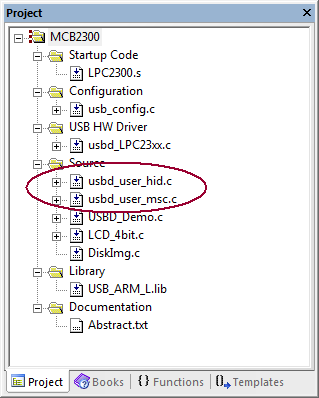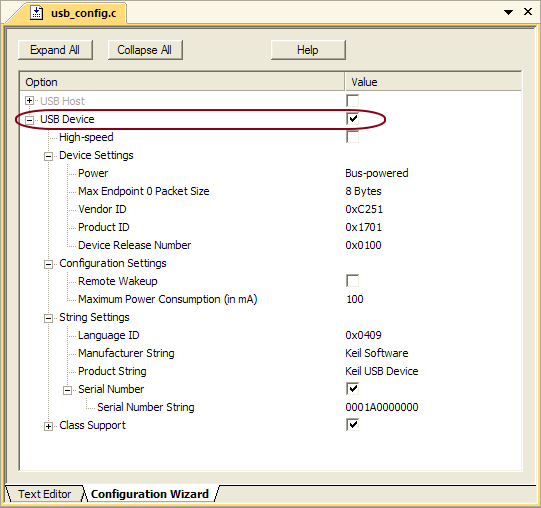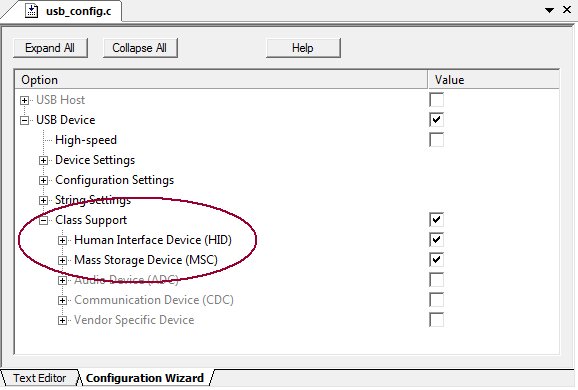|
||
| Products Download Events Support Videos | ||
Technical Support
On-Line Manuals
RL-ARM User's Guide (MDK v4)
Create Composite Applications
Create Composite Applications explains how to program a USB Device that supports more class functions. Composite applications combine various USB functionalities into one device.
Include into the project and configure the following RL-USB Device Source Files:
-
The library that matches the device core:
USB_CM1.lib - for Cortex-M1 devices.
USB_CM3.lib - for Cortex-M3 devices.
USB_ARM_L.lib - for ARM7 or ARM9 devices. - usb_config.c - to configure the USB system.
- special files - provide special files. For example, disk image file - for MSC support, driver information file - for CDC support.
- usbd_device family.c(.h) - to configure the device hardware layer.
- usbd_user_xxx.c - to adapt the code to the application needs.
-
USBD_Demo.c - to initialize and connect the USB Client
device from main().
.. usbd_init(); // USB Initialization usbd_connect(__TRUE); // USB Connect ..
Applications can be created using existing µVision projects. For example, to create a HID and MSC device:
- Copy all files from any folder \ARM\Boards\Vendor\BoardName\RL\USB\Device\Memory to a new folder and open the project *.uvproj with µVision.
-
Copy the file usbd_user_hid.c from an existing HID
project and include the file into this new project. The project
should now contain the files usbd_user_hid.c and
usbd_user_msc.c.

- Open the file usb_config.c and configure the USB device with the Configuration Wizard.
-
Enable USB Device and set the device characteristics.

-
Enable Class Support, Human Interface Device
(HID), Mass Storage Device (MSC), and set the
characteristics.

- Optionally, adapt the source file usbd_device family.c that contains hardware dependent code.
- Adapt the code in usbd_user_hid.c and usbd_user_msc.c to the application needs.
Note
- The configuration options are explained in RL-USB Device Configuration.
ProductsDevelopment Tools |
Hardware & Collateral |
Downloads |
Support |
Contact |
